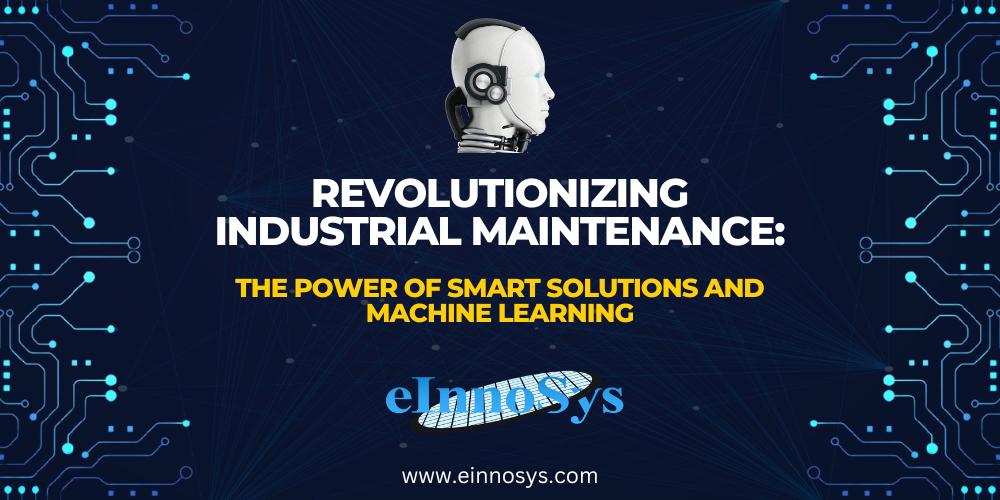Revolutionizing Industrial Maintenance: The Power Of Smart Solutions And Machine Learning
In the ever-evolving landscape of industrial operations, the role of maintenance has transcended traditional practices to embrace cutting-edge technologies. Smart maintenance solutions, coupled with the prowess of machine learning, are reshaping the way industries manage and optimize their assets. This blog explores the transformative impact of predictive analysis, real-time monitoring, and advanced analytics in the realm of industrial maintenance, shedding light on the best practices and strategies that drive efficiency and reliability.
Smart Maintenance Solutions and Machine Learning:
- Predictive Modeling for Machinery Health:
Harnessing the capabilities of machine learning, industries can now predict the health of their machinery with unprecedented accuracy. By analyzing historical data and identifying patterns, predictive modeling enables proactive maintenance measures, reducing downtime and enhancing overall equipment effectiveness.
- Data-Driven Industrial Maintenance:
The era of data-driven decision-making has dawned upon industrial maintenance. Through the collection and analysis of vast amounts of operational data, organizations can gain valuable insights into the performance of their assets. This data-driven approach facilitates more informed and strategic maintenance practices.
- Real-Time Equipment Monitoring:
Real-time monitoring has become a cornerstone of smart maintenance solutions. With the aid of sensors and IoT devices, industrial equipment can be monitored continuously. Machine learning algorithms process real-time data, enabling swift identification of anomalies and potential issues, paving the way for immediate corrective actions.
- Machine Learning for Equipment Reliability:
Machine learning algorithms play a pivotal role in enhancing equipment reliability. By leveraging historical performance data, these algorithms can predict the likelihood of equipment failures, allowing maintenance teams to prioritize tasks and allocate resources efficiently.
Machine Learning for Equipment Reliability:
The integration of the Industrial Internet of Things (IoT) with predictive maintenance is a game-changer. Connected devices enable the seamless flow of data, empowering organizations to monitor and analyze equipment health in real-time. This connectivity ensures a proactive approach to maintenance, preventing unforeseen breakdowns.
- ML Algorithms for Equipment Reliability:
Machine learning algorithms, such as neural networks and decision trees, are employed to assess equipment reliability. These algorithms learn from historical data, identifying patterns indicative of potential failures. This proactive approach helps organizations move from reactive to predictive maintenance strategies.
- Maintenance Optimization with Machine Learning:
Optimization is at the heart of efficient maintenance practices. Machine learning aids in optimizing maintenance schedules, resource allocation, and spare parts management. This not only reduces costs but also maximizes the lifespan of industrial assets.
AI Solutions for Equipment Reliability:
- Industrial Equipment Failure Analysis:
AI-driven failure analysis is a powerful tool in understanding the root causes of equipment failures. By dissecting historical failure data, AI algorithms can identify underlying issues, enabling organizations to implement targeted solutions and prevent recurrence.
- Advanced Analytics for Equipment Health:
The marriage of advanced analytics and equipment health monitoring provides a holistic view of industrial assets. By amalgamating data from various sources, organizations can gain comprehensive insights, facilitating proactive decision-making and mitigating risks.
Conclusion:
As industries embrace the era of smart maintenance solutions and machine learning, the paradigm of industrial maintenance is undergoing a profound transformation. The adoption of predictive analysis, real-time monitoring, and data-driven strategies is ushering in a new era of efficiency, reliability, and cost-effectiveness. By incorporating these advanced technologies into their maintenance practices, organizations are not just fixing issues – they are preventing them, ensuring a future of seamless and optimized industrial operations.







